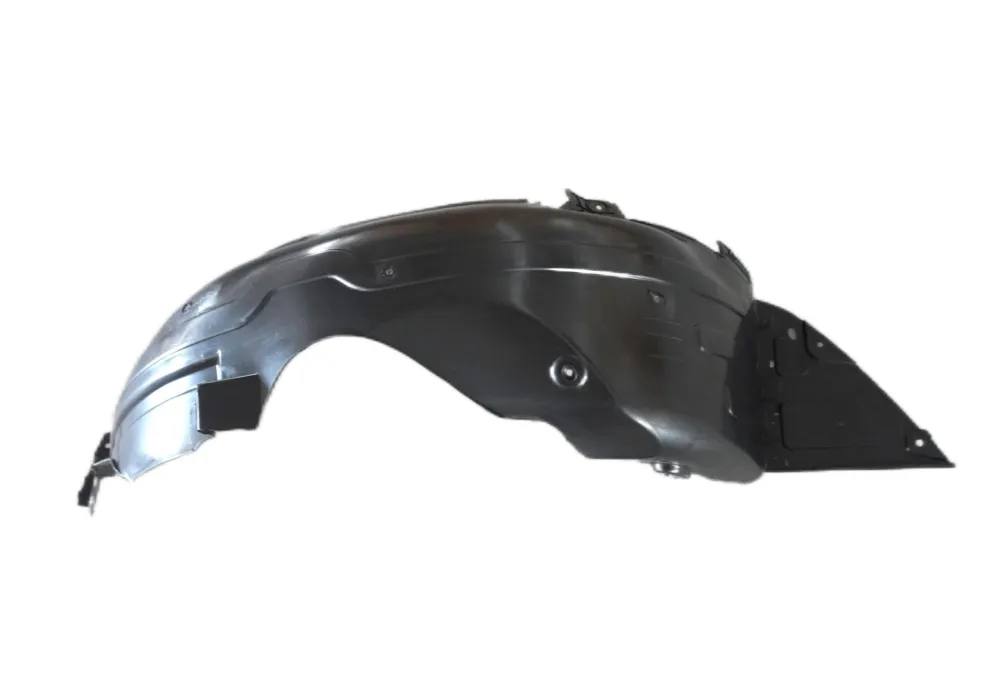Practical Guide to Choosing Long-Lasting Car Fenders
Upgrading to a high-quality car fender delivers immediate and long-term advantages for individual owners and managers of fleets. Beyond appearance, a durable car fender reduces repair frequency, protects critical components, and can improve fuel efficiency and resale value. This guide explains the top benefits of choosing premium car fenders, walks through material and installation considerations, and offers practical procurement and maintenance tips so you can make a confident, business-oriented decision.
Improved Impact Protection and Crash Performance
Impact Absorption and Energy Management
High-quality car fenders are engineered to absorb and dissipate energy in low-speed collisions and road impacts. Premium car fenders use optimized geometries and material combinations to reduce the loads transmitted to headlights, suspension, and the vehicle frame. By lowering damage to adjoining parts, these car fenders cut repair costs and keep vehicles on the road longer.
Structural Reinforcement and Safety
A well-designed car fender contributes to predictable deformation paths in a crash. Reinforced mounting points and integrated crush zones help the fender work with other body panels to protect occupants and critical hardware. Investing in stronger car fenders is therefore an investment in safety systems that matter in everyday, low-speed incidents.
Enhanced Corrosion Resistance and Longer Service Life
Material Selection and Protective Treatments
One of the most tangible benefits of upgraded car fenders is their resistance to corrosion. Premium car fenders made from aluminum, high-grade coated steel, or advanced polymers resist rust and salt damage far better than low-cost alternatives. Modern protective treatments—galvanization, powder coating, and polymeric finishes—extend service life even when the topcoat sustains minor damage.
Reduced Long-Term Maintenance
Choosing corrosion-resistant car fenders translates to fewer paint repairs, less structural deterioration, and lower inspection and maintenance costs over the vehicle lifecycle. For fleets operating in coastal or de-icing salt environments, the right car fenders drastically reduce long-term upkeep and unplanned downtime.

Weight Savings and Operating Efficiency
Lightweight Materials and Design
Many high-quality car fenders employ lighter materials—aluminum, magnesium alloys, or fiber-reinforced polymers—delivering reduced unsprung mass and overall vehicle weight. These design choices can improve fuel efficiency, extend tire life, and enhance handling characteristics that matter to both consumer vehicles and commercial fleets.
Strength-to-Weight Optimization
Premium car fenders are engineered to place material only where it’s necessary. Strategic reinforcement and hollow-section designs maintain stiffness and impact resistance while avoiding unnecessary mass. For fleet operators, small weight savings per vehicle add up to significant reductions in fuel consumption across a whole fleet.
Aesthetic and Brand Advantages
Superior Finish and Fitment
Upgraded car fenders often come with better manufacturing tolerances and higher-quality paint finishes. Tighter panel gaps and consistent paint application increase perceived value and reduce customer complaints about appearance. For companies that rely on a professional image, consistently good-looking vehicles reinforce brand trust.
Customization and Fleet Identity
Car fenders can be supplied with corporate color-matching and bespoke styling to match a company’s livery. Investing in high-quality car fenders allows consistent branding across vehicles and simplifies visual fleet management, especially when vehicles operate in public-facing roles.
Noise, Vibration, and Harshness (NVH) Benefits
Improved Sealing and Damping
Premium car fenders typically incorporate better seals and internal damping materials that reduce road noise and vibration. These NVH improvements make vehicles quieter and more comfortable, which is particularly valuable for long-distance drivers and delivery fleets where driver comfort impacts productivity.
Long-Term Fitment Stability
Because high-quality car fenders resist loosening and maintain their mounting integrity, the incidence of rattles and trim noises is reduced. Stable fitment preserves the initial quality of service and reduces repeat repair visits.
Easier Installation and Faster Turnaround
Precision Manufacturing Tolerances
High-grade car fenders are manufactured with tight tolerances, ensuring accurate alignment with existing bodywork. Whether using stamped steel, injection-molded polymers, or composite layups, precise panels reduce the need for bodyshop modifications and facilitate quicker repairs.
Reduced Labor and Downtime
Because premium car fenders fit more predictably, installation time drops and labor costs fall. Fleet managers see this as a tangible benefit: lower downtime per unit and faster vehicle return-to-service directly improve operational availability.
Durable Against Everyday Wear
Scratch, Dent, and Stone Chip Resistance
Improved outer materials and tougher coatings make upgraded car fenders far less prone to chips and abrasions. This is especially important for vehicles that operate in environments with loose gravel or urban road debris—areas that traditionally drive up cosmetic repair costs.
Environmental Stress Resistance
Premium car fenders stand up to temperature cycling, UV exposure, and chemical contaminants better than lower-quality parts. In harsh climates, the durability of these car fenders results in fewer failures and a more reliable exterior finish.
Aerodynamic and Performance Enhancements
Drag Reduction and Fuel Savings
Some high-quality car fenders are designed not just for protection but for aerodynamic performance. Carefully contoured panels can reduce drag around the wheel arches, improving stability and offering modest fuel economy gains at highway speeds—a measurable advantage for long-distance fleets.
Cooling and Venting Improvements
Advanced car fenders can include channels or vents that direct airflow to brakes or the engine bay, aiding thermal management. For heavy-duty or performance vehicles, this contributes to consistent braking performance and helps avoid heat-related component degradation.
Resale Value and Total Cost of Ownership
Higher Market Value at Sale
Vehicles that show evidence of high-quality exterior parts—tight fitment, consistent paint, minimal rust—tend to command stronger resale prices. Car fenders that age well preserve the vehicle’s appearance and can materially improve used-vehicle valuations.
Lower Overall Lifecycle Cost
While premium car fenders may cost more upfront, their resistance to damage, reduced repair frequency, and minimized downtime typically lower total cost of ownership. Firms that model lifecycle costs often find payback within a few operating years, especially in demanding environments.
Compatibility with Modern Accessories and Sensors
Integration with Driver-Assist Systems
Modern car fenders often include design features that accommodate parking sensors, side cameras, and proximity systems. Choosing upgraded car fenders avoids later retrofitting issues and preserves the functionality of safety and convenience systems.
Standardized Mounting for Aftermarket Protection
Premium car fenders provide consistent anchor points for mudguards, stone guards, and aerodynamic components. This compatibility simplifies add-on installations and increases the protective options available for specific operational needs.
Liability, Insurance, and Risk Management
Lower Claim Costs from Minor Incidents
By reducing damage severity in common low-speed impacts, upgraded car fenders can help reduce the dollar amount of insurance claims. Over time, fleets that demonstrate proactive maintenance and durable parts may find negotiating insurance terms easier.
Evidence of Preventive Maintenance
Investment in durable car fenders signals an organized maintenance program, which can be a positive factor in risk assessments and procurement audits, potentially favorably affecting insurance and contract negotiations.
Sustainability and End-of-Life Benefits
Recyclability and Material Choices
Many premium car fenders are produced from recyclable metals or plastics, enabling better end-of-life management and alignment with corporate sustainability goals. Choosing materials with established recycling streams reduces environmental impact.
Fewer Replacements Over Time
Longer-lasting car fenders mean fewer parts manufactured and fewer waste panels disposed of over a vehicle’s life—supporting sustainability targets and reducing procurement frequency.
Fleet Management and Operational Gains
Reduced Unscheduled Maintenance
Durable car fenders translate to fewer emergency body repairs and more predictable maintenance schedules. That predictability helps optimize workshop throughput and reduces unexpected operational disruption.
Simplified Spare Parts Strategy
Standardizing on a high-quality range of car fenders enables streamlined spare parts inventories, reducing stock complexity and accelerating repair workflows across multiple depots or regions.
Selecting the Right High-Quality Car Fender
Match Material to Operational Needs
Choose materials that align with your use case: aluminum or coated steel for corrosive climates, reinforced polymers for flexible impact recovery, and composites for weight-sensitive, performance-focused applications. Prioritize what drives value—repairability, corrosion resistance, weight, or cost.
Verify Certification and Test Data
Ask suppliers for impact-resistance reports, corrosion testing, material composition, and dimensional tolerances. Third-party test data and industry certifications provide confidence in long-term performance claims for car fenders.
Installation and Maintenance Best Practices
Proper Mounting and Fastener Use
Install car fenders with correct fasteners and torque settings; damaged clips should be replaced rather than reused. Proper sealants and seam treatments reduce corrosion and maintain long-term fitment.
Panel Alignment and Paint Matching
Accurate alignment and professional paint matching preserve aesthetics and prevent premature corrosion. Use factory-grade paints and correct curing processes to ensure finish durability.
Advanced Protective Technologies
Modern Coatings and Surface Treatments
Ceramic coatings, nano-polymer layers, and advanced powder finishes greatly enhance abrasion resistance and hydrophobic properties. Coated car fenders hold up better to chemical spills and road salts, protecting the underlying structure.
Integrated Impact-Absorbing Designs
Some premium car fenders include internal elastomeric layers or foam cores that reduce the transmission of shock and prevent micro-damage to adjacent panels. These integrated systems extend service life and reduce minor repair needs.
Conclusion and Next Steps
Upgrading to high-quality car fenders offers an array of operational, safety, and financial benefits. From improved impact protection and corrosion resistance to better resale value and lower total cost of ownership, the right car fenders serve as strategic investments. Use pilots, detailed lifecycle modeling, supplier verification, and clear maintenance protocols to ensure the upgrade delivers the results your fleet or business expects.
FAQ
What are the primary benefits of upgrading car fenders?
Upgrading car fenders improves impact protection, reduces corrosion and maintenance costs, enhances fitment and appearance, and supports lower vehicle downtime.
Are premium car fenders worth the investment for fleets?
Yes. For many fleets, premium car fenders reduce repair frequency and downtime, improve driver satisfaction, and lower the total cost of ownership when evaluated through lifecycle models.
How do I choose the right material for car fenders?
Match the material to operating conditions: use aluminum or coated steel where corrosion is a concern, reinforced polymers where flexible impact recovery is desired, and composites where weight reduction is critical.
Will upgraded car fenders influence insurance or liability?
They can. By reducing damage severity in minor incidents and signaling proactive maintenance, upgraded car fenders may affect claims and risk assessments, though outcomes vary by insurer.
Table of Contents
- Practical Guide to Choosing Long-Lasting Car Fenders
- Improved Impact Protection and Crash Performance
- Enhanced Corrosion Resistance and Longer Service Life
- Weight Savings and Operating Efficiency
- Aesthetic and Brand Advantages
- Noise, Vibration, and Harshness (NVH) Benefits
- Easier Installation and Faster Turnaround
- Durable Against Everyday Wear
- Aerodynamic and Performance Enhancements
- Resale Value and Total Cost of Ownership
- Compatibility with Modern Accessories and Sensors
- Liability, Insurance, and Risk Management
- Sustainability and End-of-Life Benefits
- Fleet Management and Operational Gains
- Selecting the Right High-Quality Car Fender
- Installation and Maintenance Best Practices
- Advanced Protective Technologies
- Conclusion and Next Steps
- FAQ


